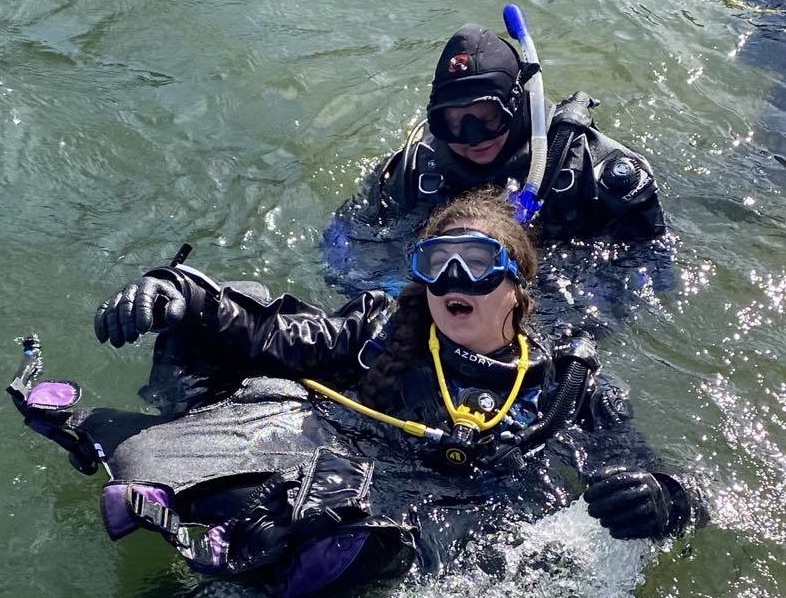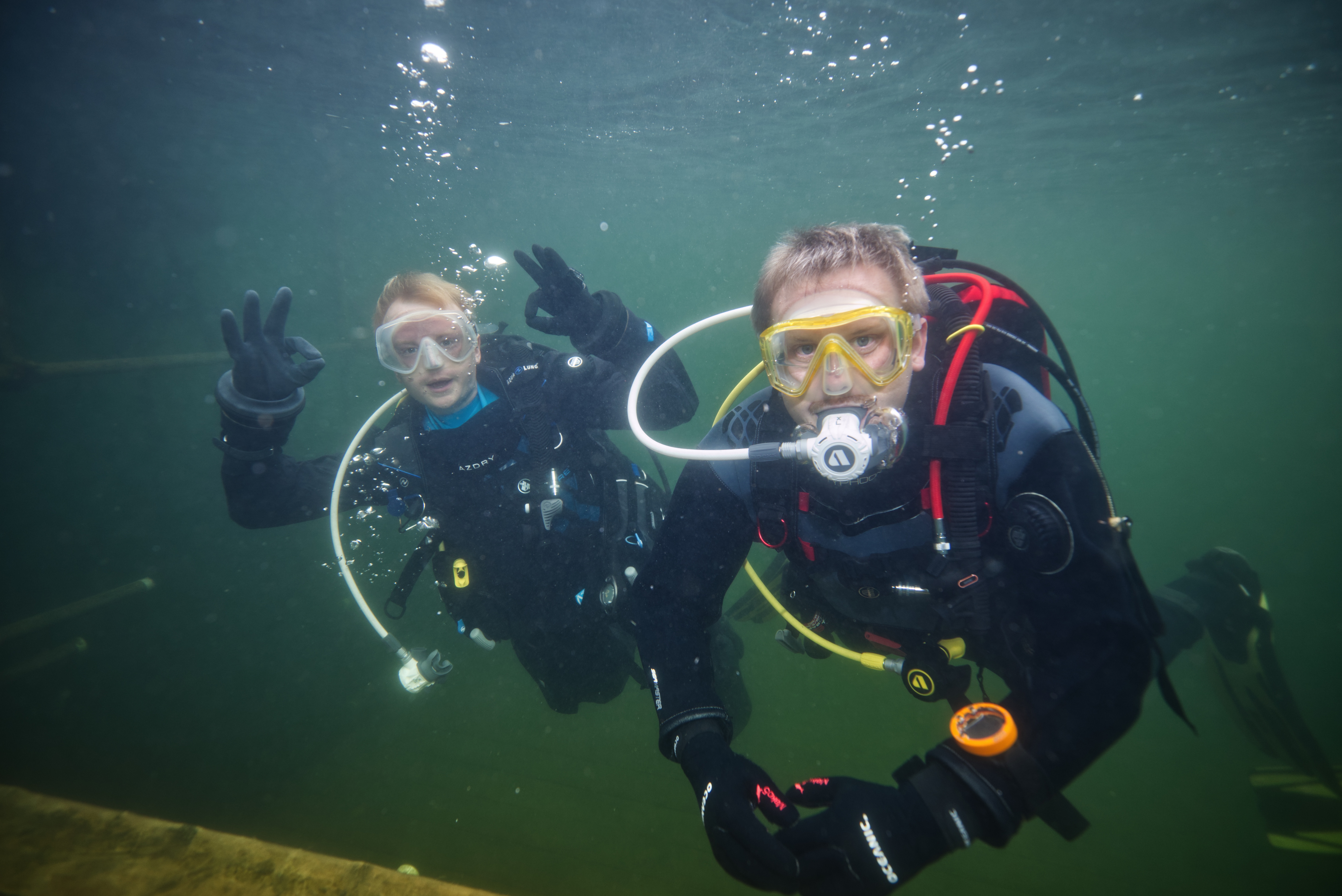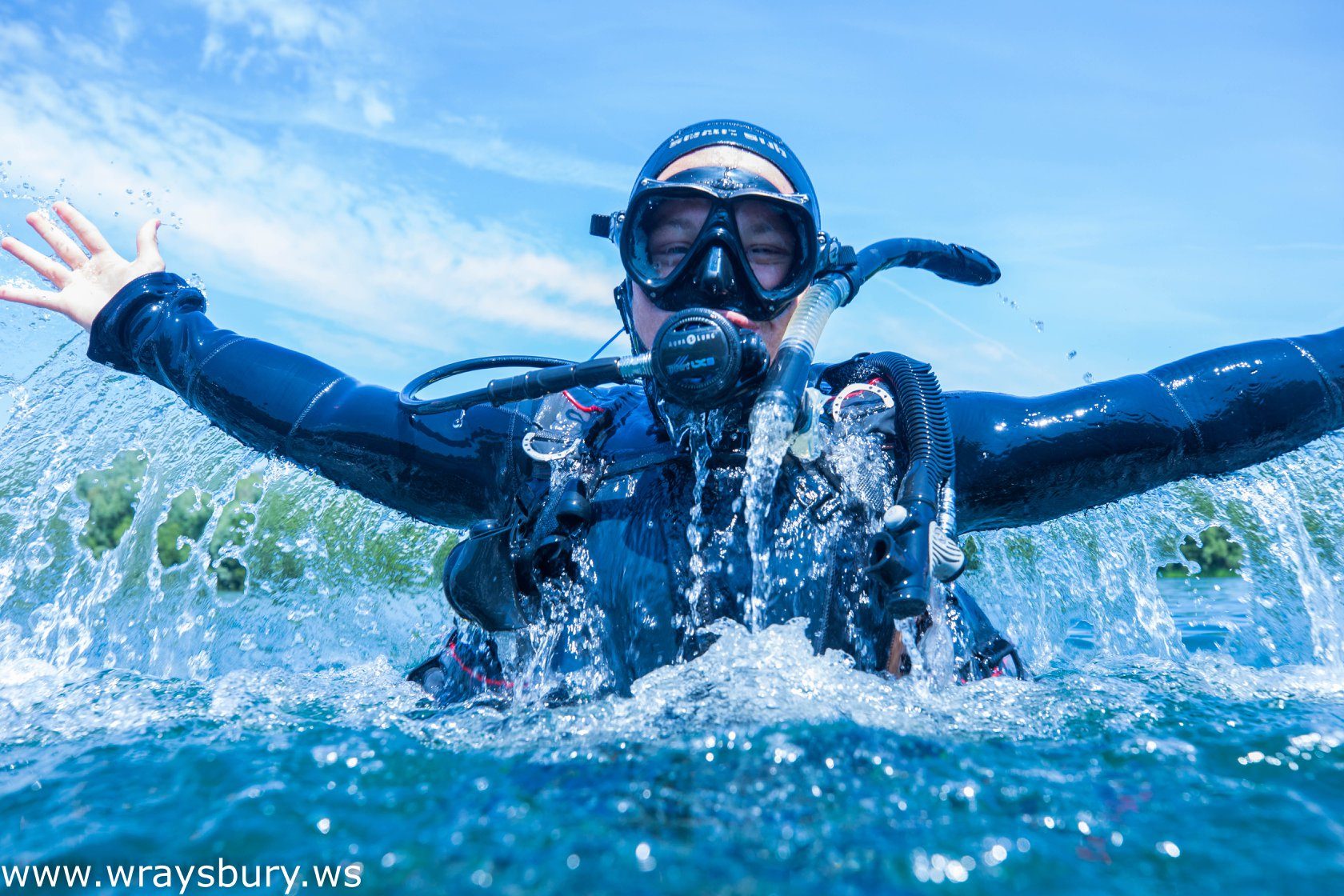Advanced Open Water
The PADI Advanced Open Water Course takes the skills that you have previously learnt diving and ‘advances,’ them. Contrary to popular myth, you do not need to be ‘advanced’ to take it. The course is about discovery, excitement and exploration. By taking part in different adventure dives you will gain an insight into various aspects of diving that you may wish to later take further through speciality courses
What does the course consist of?
The PADI Advanced Course consists of five ‘adventure’ dives which are undertaken with your Instructor. Two of these, the Deep and Navigation dives are what PADI call ‘core’ dives and these are compulsory. The remaining three dives are dives of your choosing. Common choices are listed below but chat to your instructor about what choices you are interested in and what is beneficial to you.
- Deep – The lure of the deep. There’s something exciting and mysterious about exploring deeper dive sites while scuba diving. Sometimes it’s a wreck that attracts you below 18 metres/60 feet, and on wall dives it may be a giant fan or sponge. Undertaking this adventure dive (a dive to a depth in excess of 18 metres but no deeper than 30 metres) under the direct supervision of your Instructor will allow you to extend your adventures that bit further down into the underwater realm.
- Navigation – Time to enhance your underwater navigation abilities, using both natural and compass aided navigation. Take the next steps to being the diver who knows where they are going.
- Dry Suit – Doesn’t everyone want to be warmer and dive all year round? This dive introduces you to the correct use of a dry suit, helping you get ready for the fantastic UK dive season ahead.
- Peak Performance Buoyancy – Good buoyancy skills is the basis of everything a diver does in the water. Be the best and learn how to make diving an art form! You too can look graceful and totally controlled with this dive option.
- Night – It is just what it says on the page, a dive during the dark hours. It is an opportunity to view the underwater world in a completely different light.
- Sidemount – This introduction to Sidemount diving helps you to realise your diving isn’t all about walking and swimming with heavy cylinders on your back – there is flexibility and other options.
- Surface Marker Buoy (SMB) – Being able to deploy an SMB in the water confidently and safely is a core skill for any diver anywhere in the world - you need to be visible by other water users. Learn different methods, practice and make it look effortless!
- Wreck – Wrecks are not only fascinating windows to the past but also serve as homes to a large amount of life. This dive will give you an insight into how to orientate and dive a wreck safely. At Wraysbury there are a large number of wrecks to choose to dive including our 100+ year old lifeboat, the Elizabeth Austin and our 737 cockpit.
- Photography – An introduction to one of the most popular underwater activities and opportunity to take a photo of your instructor – smile please.
How long does the course take?
Where does the course take place?
How much does the course cost?
What are the Course Prerequisites?
Learning Agreement and Cancellation Policy
How do I sign Up?
What are the course dates?
- Our courses are taught in one location at Wraysbury Dive Centre – no need to travel around at extra expense (with the exception of deep dives for the advanced and deep diver specialities)
- Because of our facility we are able to give you more in-water time than any other dive school – no need to sit in a classroom all day.
- All equipment, air fills, learning materials, logbook, certification and entrance to Wraysbury Dive Centre is included in the course price. There are no hidden extras.
- Our three full time instructors are professionals with combined experience of over 45 years in teaching diving.
- We provide you with the latest and best equipment.
- We work with you to complete the course to ensure that you leave us happy, safe and confident, even if this takes a little extra time. We provide reasonable amounts of extra time at no extra expense. Many other dive schools will charge you for this.
- We love diving and want to ensure that you do too!
What can I do after this course?
Things to do after you qualify: Further Courses: Rescue Diver

Rescue Diver£350
The Rescue Diver course is the logical next step for the majority of Advanced Open Water Divers. You will learn the next stage in not only looking after yourself but also how to prevent emergencies and care for others if one should arise. It's a serious course but huge amounts of fun!
Further Courses: Specialities
Further Courses: Master Scuba Diver
Things to do after you qualify: Go on dive trips
At Wraysbury Dive Centre we organise dive trips both at home in the UK and abroad. Trips are organised for all levels of diver. Just keep an eye on our trips page here and on our facebook page for upcoming events.
Things to do after you qualify: Buy dive kit
You may have already bought your first dive toys but if you have not, you may be considering making that first purchase. We would always recommend that you purchase your dive equipment from a dive shop rather than shopping online (and its not just because we have a dive shop on site). Buying in person allows you to try things on so that you get the right fit, get the right advice and kit for the type of diving that you intend to do and benefit from the experience of those that actually go diving. You may also end up with a better deal than you imagined.

